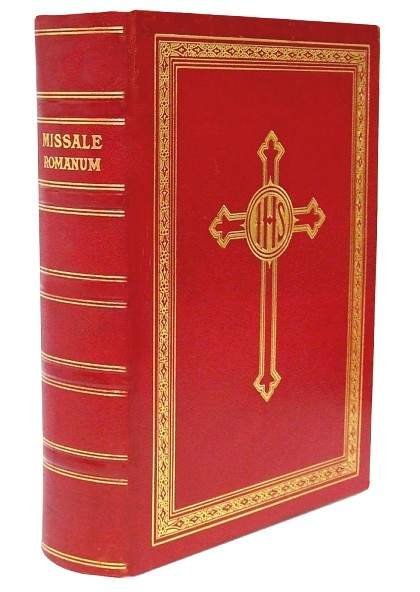 Today is the beginning of Advent, the liturgical season of expectation and preparation for the Nativity of Christ on Christmas. I’ve never celebrated Advent before, that I recall. (I remember the celebration of Advent from the year or two we attended the United Methodist church when I was a child. We had an Advent wreath at home. But I don’t remember any personal participation or devotion to it.) So this will be a new experience for me, discovering the prayers and the mindset and heartset of the expectation of Christ, as I continue to be molded to Christ and to the life of the Church.
Today is the beginning of Advent, the liturgical season of expectation and preparation for the Nativity of Christ on Christmas. I’ve never celebrated Advent before, that I recall. (I remember the celebration of Advent from the year or two we attended the United Methodist church when I was a child. We had an Advent wreath at home. But I don’t remember any personal participation or devotion to it.) So this will be a new experience for me, discovering the prayers and the mindset and heartset of the expectation of Christ, as I continue to be molded to Christ and to the life of the Church.
The church distributed our Little Blue Advent Books a couple of weeks ago at RCIA. I’m looking forward to its devotional guidance. Last year I followed the Little Books for Lent and Easter, and grew more as a Christian during those seasons than I think I ever have before. It was during that time that God confirmed that my path was leading into the Church.
Advent also marks the beginning of the liturgical year, and so accordingly, we moved as a whole church body into the long-heralded new English translation of the Roman Missal. We’ve been transitioning slowly for some time. As a diocese, we adopted new musical settings of the propers of the Mass in September; since October, Father Joe has been gradually introducing more and more of the new translation into our weekday daily Masses. This morning was the first time the whole church used the new translation in its entirety; it was the first time I had used the new Confiteor and Credo. By and large, it went off without a hitch. I heard some people who, all through the Mass, kept slipping up and giving the responses they knew by heart (admittedly, I slipped up right along with them). For many, these words were what they’d known all their lives.
 The more I’ve gotten used to it, the more I like and prefer the new translation; the more I read about its rationale, the more I value it. As a Latinist and traditionalist, I certainly value a return to closer adherence with the Latin Mass in all its catholicity. That is, I’m a little-t traditionalist, meaning someone who is faithful to Church tradition, as opposed to a big-T Traditionalist, meaning someone who perceives rupture in the Church since Vatican II and demands reversion. Speaking of Traditionalists: I wonder how they are taking this? This new translation, as I understand it, is in fact a reversion, a turning back of many of the mistaken and misguided departures the English translation of the Mass made from the Latin. It strives to be a return to unity and catholicity, doctrinally and liturgically, with the rest of the Catholic world.
The more I’ve gotten used to it, the more I like and prefer the new translation; the more I read about its rationale, the more I value it. As a Latinist and traditionalist, I certainly value a return to closer adherence with the Latin Mass in all its catholicity. That is, I’m a little-t traditionalist, meaning someone who is faithful to Church tradition, as opposed to a big-T Traditionalist, meaning someone who perceives rupture in the Church since Vatican II and demands reversion. Speaking of Traditionalists: I wonder how they are taking this? This new translation, as I understand it, is in fact a reversion, a turning back of many of the mistaken and misguided departures the English translation of the Mass made from the Latin. It strives to be a return to unity and catholicity, doctrinally and liturgically, with the rest of the Catholic world.
Will any of the Traditionalists be appeased? Will any of the schismatic ones return to communion with the Church? It’s times like these I wish I wasn’t so overwhelmed by the blogosphere, and was more in touch with prominent bloggers of different liturgical positions. (For that matter, I wish I wasn’t so overwhelmed by different positions. Right now, I’m still trying to bring myself to orthodoxy with the Church.) I tend to think that some who found issue with the substantial departures in the previous English translation from the Latin might find the new translation more acceptable. As much as I love Latin and value it in the Church and in the Mass, those Traditionalists who cling unyieldingly to the Latin Mass itself, rejecting any liturgical use of the vernacular at all, seem about as unreasonable to me as the Protestant King James Only adherents. I suppose there were other changes between the Tridentine Mass (the traditional Latin Mass) and the Mass of Paul VI (introduced in 1969) to which some Traditionalists object. I haven’t researched this. Can any reader key me in?
A piece I heard on NPR the other day about this was food for thought. I thought it did a good job of presenting both sides without bias. But I must say I was amazed at the ignorance — or is it willful innovation? — of the dissenting positions represented. I quote:
Trautman says sometimes the new translation is not faithful to the Bible. For example, it has Jesus, a poor carpenter, sipping from a precious chalice during the Last Supper.
“Any Greek dictionary will tell you, it’s a drinking cup,” Trautman says, “It’s a vessel. It’s not a chalice.”
Trautman says even Indiana Jones got that one right; the rugged historian selected a rough cup as the Holy Grail.
This is where churchmen should not take their Bible scholarship from Hollywood. Trautman is correct that the original Greek text of the Bible uses the word ποτήριον (potērion) in the accounts of Last Supper, from the Greek verb to drink, cognate with English potable, etc., and meaning literally, according to the LSJ and BDAG, a cup or drinking vessel. But if Trautman wants to take issue with the use of the word chalice in English, he should take it up with St. Jerome, not with anyone today. Jerome’s Latin Vulgate translates ποτήριον, in all four accounts (Mark, Matthew, Luke, and 1 Corinthians), as calix, from which chalice is a direct translation. Calix also translates literally, according to Lewis and Short, as a cup or drinking vessel. It’s only in English, liturgical usage that chalice has come to connote an ornate or luxurious cup; in Latin, it was just a simple cup.
(For what it’s worth, and this is extra: Latin calix derives from a different Greek word, κύλιξ [kulix], which still means a cup, especially a wine cup. So this was certainly a defensible translation choice for St. Jerome. A more direct translation from the Greek would have been poculum, which, similar to ποτήριον, derives from the verb to drink [poto].)
But Trautman’s concerns also go beyond vocabulary to theology. He cites where the new translation says Jesus died “for you and for many.”
“In preaching, we will hear that Jesus died for all people, but at the altar we will hear it Jesus died for many,” he notes. “For whom did he not die?”
Again, I wonder if this guy has ever actually read the Bible (or spoken to a Calvinist). Matthew’s Gospel, at Matthew 26:28, and most modern translations, both Protestant and Catholic, agree, reads “this is my blood of the covenant, which will is poured out for many for the forgiveness of sins” (ESV). The Greek, without dispute, reads περὶ πολλῶν, for many. Christians can debate the theological significance of this, but that’s what the Bible says.
The Rev. Michael Ryan, the pastor of St. James Cathedral in Seattle, has similar reservations. “It seems that the Latin is more important than the theology; that’s a pity,” Ryan says.
This is the part that troubles me. The last time I checked, the Church Fathers, and churchmen of all the ages, including the pope today, have written our theology in Latin. What theology is he concerned about apart from Latin? Is not closer adherence to the Latin also closer adherence to orthodox theology?
“The Second Vatican Council talked about language that would exhibit ‘noble simplicity,’ ” Ryan says. “This is anything but that. No, it’s a total move away from the teaching of the Second Vatican Council.”
Personally, I find a lot of “noble simplicity” in this new English translation. The “noble simplicity” is inherent in the original text, and this translation grasps it even more fully than the previous one. If anything, we had lost that “noble simplicity” before for vagueness and fuzziness. If this is a “total move” away from Vatican II, it’s only from the mistaken “spirit of Vatican II” that some modernists have interpreted.
“We’re dealing with a power play on the part of certain people in Rome who wanted to make changes in order, I think, to bring under greater control people in the English-speaking world.”
If this is designed to bring anyone “back into line,” it’s because some liberals have taken the “spirit of Vatican II” and the flawed, older English translation of the Mass and taken the Church in directions she wasn’t meant to go.





